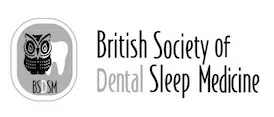Menopause and Sleep apnoea: Understanding the Intricate Connection
Introduction
Welcome to the “Centre for Non-CPAP Therapies,” where we delve into the complex world of sleep disorders and their unique interactions with various life stages, particularly menopause. In this comprehensive blog, we explore how menopause and sleep apnoea intersect and influence each other, shedding light on the importance of this knowledge for effective treatment strategies, especially those beyond conventional Continuous Positive Airway Pressure (CPAP) therapies.
Understanding Menopause
What is Menopause?
Menopause marks a significant milestone in a woman’s life, signifying the end of her reproductive years. It is defined as the point in time 12 months after a woman’s last menstrual period. This natural biological process typically occurs between the ages of 45 and 55, but it can vary widely
Stages of Menopause
- Perimenopause: This stage often begins several years before menopause when the ovaries gradually produce less oestrogen. Perimenopause lasts up until menopause, the point when the ovaries stop releasing eggs. During this stage, women may experience menopause-like symptoms.
- Menopause: This is the point when it has been a year since a woman had her last menstrual cycle.
- Post menopause: These are the years after menopause. During this stage, menopausal symptoms, such as hot flashes, may ease for many women. However, because of lower oestrogen levels, postmenopausal women are at increased risk for several health conditions, such as osteoporosis and heart disease .
Symptoms and Hormonal Changes
Menopause brings about a plethora of changes and symptoms, including irregular periods, hot flushes, night sweats, mood changes, weight gain, thinning hair, dry skin, and sleep problems. The root of these symptoms lies in the hormonal upheavals happening within the body – mainly, the decline in oestrogen and progesterone levels.
Menopause and Sleep
One of the most significant yet often overlooked symptoms of menopause is sleep disturbance. Hot flashes and night sweats can disrupt sleep, leading to difficulty falling asleep and staying asleep. These disturbances not only affect the quantity of sleep but also its quality, leaving many feeling exhausted and irritable.
Understanding Sleep apnoea
What is Sleep Apnoea?
Sleep apnoea is a potentially serious sleep disorder in which breathing repeatedly stops and starts during sleep. The most common type, Obstructive Sleep Apnoea (OSA), occurs when throat muscles intermittently relax and block the airway during sleep.
Symptoms and Risk Factors
Sleep apnoea can affect anyone, but certain factors increase the risk, including obesity, a narrowed airway, smoking, alcohol, nasal congestion, and genetics and gender. Men are more likely to develop sleep apnoea, but the risk for women increases towards menopause.
Non-CPAP Treatments
While CPAP is a standard treatment for sleep apnoea, various non-CPAP therapies have emerged, offering effective alternatives. These include lifestyle changes, oral appliances, positional therapy, and surgical options, tailored to individual patient needs and conditions. There are several emergent adjuvant therapies that may be applied with the primary therapy listed previously.
The Link Between Menopause and Sleep Apnoea
Hormonal Changes and Sleep Apnoea
The hormonal changes during menopause significantly impact the likelihood of developing sleep apnoea. The decrease in oestrogen and progesterone can lead to weight gain and a redistribution of body fat, contributing to the narrowing of the airway during sleep. Additionally, these hormones are known to influence muscle tone and respiratory drive, which are crucial factors in maintaining open airways.
Menopause-Related Weight Gain and Sleep Apnoea
Weight gain during menopause is not just a matter of increased body fat but also its distribution, which often shifts to the abdominal area. This central obesity is a known risk factor for obstructive sleep apnoea, as it not only reduces lung volume but increases the likelihood of airway obstruction and breathing difficulties during sleep.
Health Consequences of Menopause and Sleep Apnoea
Physical Health Risks
The combination of menopause and sleep apnoea can lead to a range of health issues. Women suffering from both conditions are at a higher risk of developing cardiovascular diseases, including hypertension and heart attacks, due to the strain on the heart caused by repeated oxygen deprivation during sleep. The risk of developing type 2 diabetes also increases, as both sleep apnoea and menopause can affect glucose levels in the bloodstream.
Mental Health Impact
Beyond physical health, the quality of life can be significantly impacted. Chronic sleep deprivation and poor sleep quality can lead to mood disorders, including depression and anxiety. The hormonal changes of menopause, coupled with the stress of sleep apnoea, exacerbate one’s mental health.
Non-CPAP Therapies and Lifestyle Adjustments
Overview of Non-CPAP Treatments
At the Centre for Non-CPAP Therapies, a range of alternatives to CPAP are offered for managing sleep apnoea in menopausal women. These include oral appliances that adjust the position of the jaw or tongue to keep the airway open, positional therapy to encourage sleeping in positions that reduce apnoea events, and in some cases, surgical options to remove tissue causing airway obstruction. We offer therapies to strengthen the airway muscles of which the tongue muscle is the largest, through targeted exercises or new technology.
Lifestyle Changes
Lifestyle modifications can play a significant role in managing symptoms of snoring and sleep apnoea. A balanced diet and regular exercise can help in weight management, reducing the severity of sleep apnoea. Good sleep hygiene practices, such as maintaining a regular sleep schedule, avoiding alcohol and sedatives, and creating a comfortable sleep environment, can also help mitigate the effects of both menopause and sleep apnoea.
Conclusion
The intricate relationship between menopause and sleep apnoea cannot be overstated. As we have explored, the hormonal changes of menopause significantly increase the risk and severity of sleep apnoea, which in turn can lead to a host of health issues, both physical and mental. Recognizing and addressing these conditions in tandem is crucial for the health and well-being of menopausal women.
The Role of Non-CPAP Therapies
At the “Centre for Non-CPAP Therapies,” we emphasize the importance of individualized care. Our approach goes beyond the conventional CPAP treatment, focusing on a variety of non-CPAP therapies, including oral appliances, positional therapy, and lifestyle modifications. These alternatives are not only effective but also often more comfortable and easier to adhere to, making them an excellent option for many women.
Empowering Women Through Education and Support
Knowledge is power, especially when it comes to managing health. We encourage women undergoing menopause and experiencing symptoms of sleep apnoea to educate themselves, seek support, and explore all treatment options. By understanding the connection between menopause and sleep apnoea, women can be proactive in seeking care that best suits their needs and lifestyle
If you or someone you know is struggling with sleep disturbances during menopause, we are here to help. Our team at the “Centre for Non-CPAP Therapies”, and under the care of Dr Aditi Desai, is dedicated to providing specialized care tailored to the unique needs of menopausal women. Contact us for a consultation and begin your journey towards better sleep and improved health.







